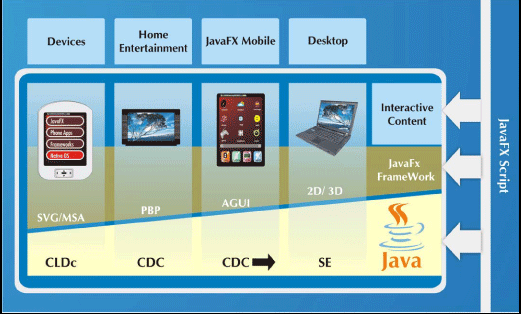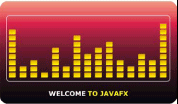Emergence of JavaFX
JavaFX began as a project by
Chris Oliver called F3 which stands for ?Form follows function?, and its
purpose was to explore making GUI programming easier in general.
F3 attempted to demonstrate that we're not exploiting the
full capabilities of the Java platform for GUI development. Taking together
the supporting tools like F3, Java platform is highly competitive with or
superior to competing GUI development platforms such as Macromedia
Flash/Flex/Open Laszlo, Adobe Apollo, Microsoft WPF/XAML, Mozilla XUL, AJAX/DHMTL.
At the 2007 JavaOne Conference,
Sun introduced two products in the JavaFX family: JavaFX Script and JavaFX
Mobile.
JavaFX:
A big picture
From smart cards to mobile
phones to enterprise applications and supercomputers, Java technology has
become one of the world's most significant and pervasive platforms. Java
technology truly is everywhere. The JavaFX family will make it easier than
ever to build and quickly deploy rich Internet applications and interactive
content on clients ranging from the browser to devices.
The JavaFX product family
leverages the Java platform's write-once-run-anywhere portability,
application security model, ubiquitous distribution and enterprise
connectivity
Today's Internet offers a world
of possibility for those who can quickly develop and deploy rich internet
applications (RIAs). But only the Java platform is pervasive enough on mobile
devices and browsers to effectively marry client- and browser-based
technologies with RIAs enabling applications to run on multiple platforms
virtually unchanged. JavaFX is Sun's new product family that addresses this
market. JavaFX Script will enable developers to more quickly and easily
develop RIAs and next-generation services that can be proliferated across
virtually any device -- from desktop browsers and mobile devices, to set-top
boxes and Blu-ray Discs -- securely and without local installation. JavaFX
Mobile software makes these type of applications a reality for the mobile
world.



